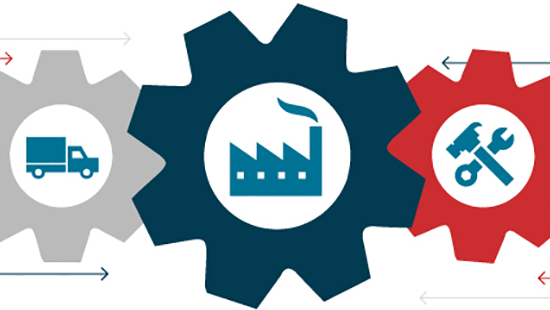Beyond the Production Line: Emerging Downstream Supply Chain Risks


The digital shift accelerated by the COVID-19 pandemic is reshaping how manufacturers conduct business. It's placing greater emphasis on managing the customer experience, understanding changing customer expectations and reshaping the distribution landscape.
Buying and selling trends have gradually shifted towards ecommerce for smaller ticket items over the past two decades, and the pandemic has significantly accelerated that trend. To remain competitive, some manufacturers are increasing their ability to sell directly to customers – heightening the importance of the customer experience.

42% of executives named e-commerce as a top growth strategy¹ with some of the highest adoption anticipated in electronics, electrical and precision equipment, and metals equipment manufacturers.²
Manufacturers should consider which elements of their downstream supply chain could directly impact customer loyalty, like customer communications, and warehousing and distribution.
Adapting to customer expectations
With shifting buyer mindsets and habits in response to increases in e-commerce, customers expect more transparency into products and supply chain information, such as more accurate information on delivery dates and midstream delays of those dates.
More frequent and effective customer communication and service is also expected when circumstances require immediate notifications, like warranty expirations, service announcements, or product notices and recalls. Depending on the criticality, delayed or incomplete customer communications could negatively impact brand loyalty and create reputational risk.
To improve communications to meet these evolving customer expectations, consider the following elements in your customer service training programs:
- Ensure training practices include in-depth product capabilities and intended-use information.
- Revisit training practices often to reflect changes in frequently asked questions as customer expectations shift.
- Establish communication plans for warranty programs and complaint-handling processes.
- Evaluate the effectiveness of product recall programs to be sure they include policies for responding to traditional media and social media reactions.
- Today’s buyers demand transparency and some assurances that materials are responsibly sourced and environmentally sustainable. Be sure that employees and post-sale marketing are positioned to address these types of inquiries.
Your customer's risk could be your risk
Manufacturers who specialize in certain products may rely on single or few customers for a large portion of their revenue. If those customers experience an unexpected loss or go out of business, these dependencies could result in business income disruption for you. Take a critical look at current and prospective customers to understand the likelihood of disruption to their ability to purchase or sell your products. Are they located in an area prone to natural hazards or political conflicts? Have you considered the latest applicable trade laws and regulations? Understanding the risks your customers face may inform how you mitigate your own risks.
Managing risk in a changing distribution landscape
To better address volatile demand and heightened customer expectations, manufacturers are reexamining the final leg of a product’s journey. While pandemic-related lockdowns led to supply shortages of basic goods, the short-term disruption gave producers an opportunity to reconfigure strategies within their downstream supply chain. Consider the following to reduce interruption of the flow of goods to customers:
Diversify distribution networks. The increased demand on warehouses can create a struggle to meet demand. If you rely on a single logistics provider or warehouse, it may be time to consider additional options. Practice the same strict oversight as you would your primary providers.
Consider distribution partners who are investing in automation. Unexpected and unpredictable ebbs and flows in demand for products have pushed for reconfiguring of distribution centers. Manufacturers may consider seeking out distribution partners that invest in automation to accommodate the increased volume of e-commerce transactions, ultimately increasing customer satisfaction.
Locating your inventory at any given time during distribution is critical for your customers, and particularly in the event of a product recall or a wide-spread disruption. Real-time data enables manufacturers to pivot quickly to activate their contingency plan to get products through alternate distribution channels and communicate clearly with customers.
Understand inventory controls and cargo risks. Securing inventory from theft and damage is important to continued business operations. Proper inventory and environmental controls at all storage locations and with all transportation providers can help prevent damage or loss of goods – ensuring your business can continue to meet customer demands. Evaluate how products and/or materials are being stored to ensure storage practices meet your product and security requirements.
There’s a lot that can happen to cargo on its journey. Protection from cargo risks is key to protecting your supply chain.
Create a Contingency Plan. The overall theme for managing distribution is understanding your risks. From your customers to your network of distribution partners and transportation providers, it is critical to develop and document strategies to protect against interruptions in the downstream flow of your goods or services.
Identify post-production pressure points
You can address many exposures in your supply chain by taking advantage of tools and expertise that Travelers offers to assist you. By taking the Supply Chain Pressure Test, you will participate in a brief questionnaire that can help you evaluate the stages of your supply chain for weaknesses, including the downstream impacts, and help you to prioritize the areas that have the largest potential for disruption. Contact an independent agent today.
Sources
1 Citrin Cooperman
2 Travelers Enterprise Market Research Survey



